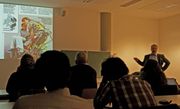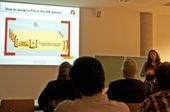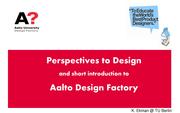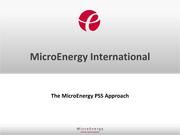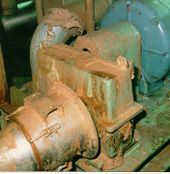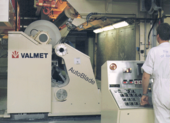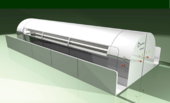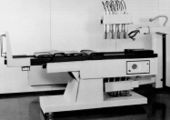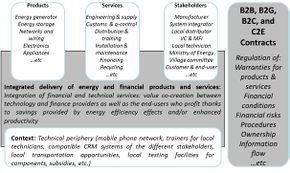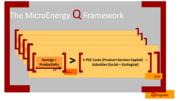Difference between revisions of "Adapted Product and Service Design – How to Work Together for a Sustainable Future?"
***** (***** | *****) |
***** (***** | *****) m |
||
| (6 intermediate revisions by 2 users not shown) | |||
| Line 6: | Line 6: | ||
|} | |} | ||
| − | = | + | = Overview = |
| − | + | Technological features are not the only important part of successful [[Basic_Energy_Services_-_Overview#Energy_Systems|energy systems]]. This session focused on the design of technology - not only on the look of a charge controller but the whole system needed. | |
| − | |||
| − | |||
| − | |||
| − | |||
| − | |||
| − | Technological features are not the only important part of successful energy systems. This session focused on the design of technology - not only on the look of a charge controller but the whole system needed. | ||
To get an overview on this topic two lecturers introduced their perspective on the design question. Prof. Kalevi Ekman from Finland is founder of the Aalto University Design Factory and gave an general idea of what especially engineers should know about design. Noara Kebir is the Managing Director and co-founder of MicroEnergy International, a company specialized in supporting financial institutions to develop and implement energy specific programs. She gave a more detailed insight into the role of design in microenergy solutions. | To get an overview on this topic two lecturers introduced their perspective on the design question. Prof. Kalevi Ekman from Finland is founder of the Aalto University Design Factory and gave an general idea of what especially engineers should know about design. Noara Kebir is the Managing Director and co-founder of MicroEnergy International, a company specialized in supporting financial institutions to develop and implement energy specific programs. She gave a more detailed insight into the role of design in microenergy solutions. | ||
| Line 23: | Line 17: | ||
| [[File:Noara Kebir presenting.jpg|thumb|center|170px|Noara Kebir]] | | [[File:Noara Kebir presenting.jpg|thumb|center|170px|Noara Kebir]] | ||
|} | |} | ||
| + | |||
| + | <br/> | ||
| + | |||
| + | |||
| + | |||
| + | = Presentations = | ||
| + | |||
| + | [[File:Perspectives to Design.pdf|thumb|left|180px|Perspectives to Design]][[File:MEI PSS DesignV2.pdf|thumb|left|180px|Product Service System Design]] | ||
<br/> | <br/> | ||
| Line 32: | Line 34: | ||
''What is design?'' | ''What is design?'' | ||
| − | The usual picture in our minds is one of fancy, expensive and useless | + | The usual picture in our minds is one of fancy, expensive and useless artifacts such as tableware or vases. If you think a little longer business-to-customer products as mobile phones and cameras might come to our minds. Design as a measure to be competitive on the market. |
| − | The design quality seems to be hard to put a finger on. Normally, engineers work with | + | The design quality seems to be hard to put a finger on. Normally, engineers work with matrices to calculate e.g. the price per kilogram of a number of products. Let's compare some numbers: A steak could cost some 20€ per kg in Finland. Another everyday product in the land o the woods is paper which costs less than 1 €/kg. To get a little closer into the topic of energy, what about a wind mill? It costs about 1.5 million euros/300 tons. So it`s price per kilogram is somewhere around 5€. The before mentioned camera comes at 1,000 €/kg and a light weight pair of glasses at 180 € per 1.8 grams, which makes 180,000 €/kg.<br/> |
We obviously don't pay according to the weight of a product. To get a closer idea of what design means, Prof. Ekman presented different objects. [[File:First gen.jpg|thumb|170px|First generation of machine]] [[File:Second gen.png|thumb|170px|Second generation of machine]][[File:Third gen.png|thumb|170px|Third generation of machine]][[File:Medical Machine 70s.jpg|thumb|170px|Medical Machine from the 70s]] | We obviously don't pay according to the weight of a product. To get a closer idea of what design means, Prof. Ekman presented different objects. [[File:First gen.jpg|thumb|170px|First generation of machine]] [[File:Second gen.png|thumb|170px|Second generation of machine]][[File:Third gen.png|thumb|170px|Third generation of machine]][[File:Medical Machine 70s.jpg|thumb|170px|Medical Machine from the 70s]] | ||
| − | #Calendering machine: This machine is used in the paper making process to improve the quality of a sheet of paper. The quality can either be improved by "ironing" the sheet in a process comparable to the ironing of cloth that you might - or might not - know. The surface can also be coated by a machine which combines engineering knowledge in pneumatics, electronics and other disciplines. The first generation shows how different disciplines are meshed together into one pot. Dust and cables are everywhere. The second generation already looks different. It is designed for easier | + | #Calendering machine: This machine is used in the paper making process to improve the quality of a sheet of paper. The quality can either be improved by "ironing" the sheet in a process comparable to the ironing of cloth that you might - or might not - know. The surface can also be coated by a machine which combines engineering knowledge in pneumatics, electronics and other disciplines. The first generation shows how different disciplines are meshed together into one pot. Dust and cables are everywhere. The second generation already looks different. It is designed for easier operation, cleaning and maintenance. The third generation has some resemblance with a spacecraft. No moisture or dust comes in or out. For maintenance only one big piece has to be taken away. Maintenance though can not performed by any operator but by specialists only. |
| − | #Cars: Dacia, Renault, BMW - all these producers offer different car types but what is the same in their advertisements: sure all cars have four wheels and provide the same | + | #Cars: Dacia, Renault, BMW - all these producers offer different car types but what is the same in their advertisements: sure all cars have four wheels and provide the same functionality but what is most striking is that they all use aluminium wheels. That is not how cars are equipped in the shops. There you usually find steel wheels. Aluminium wheels are used in advertisements because of aesthetics nothing else. |
#Tractors: To compare the outside of tractors doesn't really reveal the stunning changes in this product line. The real difference is inside. As farmers spend up till 16 hours in the tractor cabin in the main season media, space for food and drinks and a lot of information technology has been added. | #Tractors: To compare the outside of tractors doesn't really reveal the stunning changes in this product line. The real difference is inside. As farmers spend up till 16 hours in the tractor cabin in the main season media, space for food and drinks and a lot of information technology has been added. | ||
#Mixer: The Kenwood Design hasn't nearly changed. It still looks quite the way it did in the 50s. But obviously there is a difference between now and then: The advertisement has no the happy housewife in focus with her supporting husband standing behind her. | #Mixer: The Kenwood Design hasn't nearly changed. It still looks quite the way it did in the 50s. But obviously there is a difference between now and then: The advertisement has no the happy housewife in focus with her supporting husband standing behind her. | ||
| Line 46: | Line 48: | ||
<br/>The main message of this list is: | <br/>The main message of this list is: | ||
| − | ''All | + | ''All artifacts are designed - either by professionals or by well meaning hobbyists.'' |
No matter if process lines, hobby equipment or health care, there is always some space for different design. | No matter if process lines, hobby equipment or health care, there is always some space for different design. | ||
| Line 52: | Line 54: | ||
<br/> | <br/> | ||
| − | = The Microenergy PSS Approach = | + | = The Microenergy Product Service System (PSS) Approach = |
| − | == What is a PSS | + | == What is a Product Service System (PSS)? == |
| − | + | The '''Product Service System (PSS)''' offers all the services around the product. For a machine or a car this could be maintenance or more specific activities. An example for a business supporting system is a leasing offer for a product that doesn't require cash payment. | |
| − | + | <u>In fact, most products nowadays come with services integrated. To create a PSS following decisions have to be taken:</u> | |
| + | #What product to choose | ||
| + | #what services to offer | ||
| + | #which stakeholders to take into account | ||
| + | #how to interact with the customer | ||
| + | #how to design the end of the product use | ||
| − | + | <br/> | |
| − | + | == What is a Product Service System (PSS) in the Microenergy Sector? == | |
| − | + | [[File:Basic Elements of a PSS.jpg|thumb|290px|Basic Elements of a PSS]]<u>In the energy sector typical products are:</u> | |
| + | #generators | ||
| + | #storage | ||
| + | #networks/wiring | ||
| + | #electronics | ||
| + | #appliances (lamps). | ||
| − | + | The services provided around these products are service quality control, training of local staff, the distribution of the product and much more. Typical stakeholders are the manufacturers of the product, local distributors and a Ministry of energy (which provides subsidies for promising business models). Also the context has to be clarified e.g. whether there is existing infrastructure like a mobile phone network. | |
| + | == How to design a PSS in the Microenergy Sector == | ||
| + | [[File:The Microenergy Q Framework.png|thumb|180px|The Microenergy Quality Framework]][[File:Poultry farm Uganda.jpg|thumb|180px|A poultry farm in Uganda.]]To show more clearly how Product Service Systems can work in the microenergy sector, Noara Kebir explained a typical user of a[[Solar Home Systems (SHS)|Solar Home System (SHS)]]. | ||
| − | + | Her chosen example was that of a woman in Uganda who payed 300 to 400 € to equip her house with a SHS. She not only wanted to light several rooms in her house but also to enhance her business. In one extra house she has a poultry farm. With her SHS she wants to generate heat and light to make her chicken grow faster. She also tried to sale internet services, so she is open to new business opportunities. | |
| − | + | Part of a product service in this case would be to connect the SHS with the various installations that are required to fulfill the described needs. The woman could also want to connect her other gadgets: DVD player, TV set and a torch. These cannot easily be connected to the DC grid that is installed for the SHS. | |
| − | Woman SHS | + | For a successful PSS the equation would have to be like this: Woman buys SHS, generates an increased turn over with her poultry farm and uses this to pay back the SHS including service costs. |
| − | + | <br/> | |
== Design Results == | == Design Results == | ||
| − | #Smaller Solar Home Systems are normally bought by very poor people | + | #Smaller Solar Home Systems are normally bought by very poor people which can only afford a SHS when profiting from "pro-poor subsidies". Still, they will never generate profits, instead their losses will increase when the loan period is extended. Pure economic return on investment is not high enough from an end user's perspective. |
| − | #Larger SHS look better from an economical point of view. People with a higher income purchase larger products and the share of the service costs decreases. | + | #Larger SHS look better from an economical point of view. People with a higher income purchase larger products and the share of the service costs decreases. Service costs play an important role because subsidies only relate to products, not to services. |
| − | From the | + | From the perspective of a developed country, a good quality product seems to be the better solution than a cheap product with poor quality. The equation normally is better design - better longevity - better return on investment. But in the case of e.g. Uganda locally produced cheap batteries that are regularly exchanged are a better business case than an imported, longer lasting battery. Even if this solution is not good for the environment, from the perspective of development it is favorable because more value creation is on the local level. |
But the future looks promising even for potential owners of small SHS. When the density of SHS grows and the ones with the higher income pay for the “installation” of the distribution system, service and especially transportation gets cheaper and small systems can be integrated step by step. | But the future looks promising even for potential owners of small SHS. When the density of SHS grows and the ones with the higher income pay for the “installation” of the distribution system, service and especially transportation gets cheaper and small systems can be integrated step by step. | ||
| + | |||
| + | |||
= Discussion = | = Discussion = | ||
| + | |||
| + | ''Question from the audience: Product or service - what comes first?'' | ||
| + | |||
| + | Noara Kebir: I would say the service could play a bigger role. In the evolution of good products the services around it are crucial for the product creation. | ||
| + | |||
| + | Kalevi Ekman: The problem comes first, then the product or the service. In most cases this is very overlapping. | ||
| + | |||
| + | ''Q: Is service always best from local people?'' | ||
| + | |||
| + | N: It depends on the business model: service design deskill process; Maintenance as easy as possible, design service; acting in local environment with low skills; design so local people can better use it; services should be adapted to the low skills of remote technicians. This would also avoid a brain drain from our knowledge. End users should be able to fix their stuff themselves. Like the cars in Cuba, that people still repair themselves while we have no skills to fix our own cars nor is it intended by modern car designers. | ||
| + | |||
| + | ''Q: Regarding the covered machine explained by Prof. Ekman: With this design service can be sold because no one except for the producer can open it. Isn't this like the planned obsolescence of printers that include a designed feature that deactivates the printer after a certain amount of prints whilst the real business in the context is selling the ink? Why does this make sense?'' | ||
| + | |||
| + | E: There is a thinking failure: designers are not thinking like bad persons but when the head of a printer is polished after several prints the ink would flow over. The deactivation of the printer is for security reasons and normal users don’t print so often. In general, products in the Western World are too cheap and designers have to make compromises. | ||
| + | |||
| + | N: This is an interdisciplinary project between engineers and economists. The business case behind it is that machines are made accessible for everyone. Everyone can afford a printer nowadays and still the business increases it's incomes. | ||
| + | |||
| + | ''Q: How can product design become more sustainable?'' | ||
| + | |||
| + | E: issues guiding direction legislation, competition, companies wants to be seen by users | ||
| + | |||
| + | N: The challenge for upcoming generations is that environmental and social aspects have to be compared with each other. That’s often how reality looks like. We have to rethink our needs. What are we working for? Energy is not a vital needs but it is close. A lot of our money is only spent for consumption. | ||
| + | |||
| + | ''Remark: The Dutch fair phone is sustainable. You can repair it yourself, it is designed this way.'' This is a product that combines a good product with a good service design for a sustainable future. | ||
| + | |||
| + | E: Let's assume there were no cars. The main usage of a car is to be parked somewhere. This is the case with most expansive gadgets that people spent money on. | ||
| + | |||
| + | |||
| + | |||
| + | = Further Information = | ||
| + | |||
| + | *[[Energy_in_Development_-_Lecture_Series|Energy in Development - Lecture Series]] | ||
| + | *[[:Category:Energy_Use|Energy Use Portal on energypedia]] | ||
| + | *[[:Category:Microenergy_Systems|All MicroEnergy Systems Articles on energypedia]] | ||
| + | |||
| + | |||
= References = | = References = | ||
| + | |||
| + | <references /> | ||
[[Category:Microenergy_Systems]] | [[Category:Microenergy_Systems]] | ||
Latest revision as of 12:58, 7 October 2014
| ► | Back to the Lecture Series: Energy in Development |
Overview
Technological features are not the only important part of successful energy systems. This session focused on the design of technology - not only on the look of a charge controller but the whole system needed.
To get an overview on this topic two lecturers introduced their perspective on the design question. Prof. Kalevi Ekman from Finland is founder of the Aalto University Design Factory and gave an general idea of what especially engineers should know about design. Noara Kebir is the Managing Director and co-founder of MicroEnergy International, a company specialized in supporting financial institutions to develop and implement energy specific programs. She gave a more detailed insight into the role of design in microenergy solutions.
Presentations
Perspectives to Design
Prof. Ekman likes to pose questions. Think about this one:
What is design?
The usual picture in our minds is one of fancy, expensive and useless artifacts such as tableware or vases. If you think a little longer business-to-customer products as mobile phones and cameras might come to our minds. Design as a measure to be competitive on the market.
The design quality seems to be hard to put a finger on. Normally, engineers work with matrices to calculate e.g. the price per kilogram of a number of products. Let's compare some numbers: A steak could cost some 20€ per kg in Finland. Another everyday product in the land o the woods is paper which costs less than 1 €/kg. To get a little closer into the topic of energy, what about a wind mill? It costs about 1.5 million euros/300 tons. So it`s price per kilogram is somewhere around 5€. The before mentioned camera comes at 1,000 €/kg and a light weight pair of glasses at 180 € per 1.8 grams, which makes 180,000 €/kg.
We obviously don't pay according to the weight of a product. To get a closer idea of what design means, Prof. Ekman presented different objects.
- Calendering machine: This machine is used in the paper making process to improve the quality of a sheet of paper. The quality can either be improved by "ironing" the sheet in a process comparable to the ironing of cloth that you might - or might not - know. The surface can also be coated by a machine which combines engineering knowledge in pneumatics, electronics and other disciplines. The first generation shows how different disciplines are meshed together into one pot. Dust and cables are everywhere. The second generation already looks different. It is designed for easier operation, cleaning and maintenance. The third generation has some resemblance with a spacecraft. No moisture or dust comes in or out. For maintenance only one big piece has to be taken away. Maintenance though can not performed by any operator but by specialists only.
- Cars: Dacia, Renault, BMW - all these producers offer different car types but what is the same in their advertisements: sure all cars have four wheels and provide the same functionality but what is most striking is that they all use aluminium wheels. That is not how cars are equipped in the shops. There you usually find steel wheels. Aluminium wheels are used in advertisements because of aesthetics nothing else.
- Tractors: To compare the outside of tractors doesn't really reveal the stunning changes in this product line. The real difference is inside. As farmers spend up till 16 hours in the tractor cabin in the main season media, space for food and drinks and a lot of information technology has been added.
- Mixer: The Kenwood Design hasn't nearly changed. It still looks quite the way it did in the 50s. But obviously there is a difference between now and then: The advertisement has no the happy housewife in focus with her supporting husband standing behind her.
- Medical machine: Another question for you: Could you easily go under this machine? If not, you have probably not been raised in the 70s because it was then this machine got awarded for it's appealing design.
- Power suit: In the introducing picture you can see Prof. Ekman pointing on a curious slide. It shows the power suit developed for a nurse to pneumatically support her to lift a patient. The article publishing this picture says the design of the prototype is not yet user friendly. Well, that is obvious but at this point, according to Prof. Ekman, it is already to late to call for designers.
The main message of this list is:
All artifacts are designed - either by professionals or by well meaning hobbyists.
No matter if process lines, hobby equipment or health care, there is always some space for different design.
The Microenergy Product Service System (PSS) Approach
What is a Product Service System (PSS)?
The Product Service System (PSS) offers all the services around the product. For a machine or a car this could be maintenance or more specific activities. An example for a business supporting system is a leasing offer for a product that doesn't require cash payment.
In fact, most products nowadays come with services integrated. To create a PSS following decisions have to be taken:
- What product to choose
- what services to offer
- which stakeholders to take into account
- how to interact with the customer
- how to design the end of the product use
What is a Product Service System (PSS) in the Microenergy Sector?
In the energy sector typical products are:
- generators
- storage
- networks/wiring
- electronics
- appliances (lamps).
The services provided around these products are service quality control, training of local staff, the distribution of the product and much more. Typical stakeholders are the manufacturers of the product, local distributors and a Ministry of energy (which provides subsidies for promising business models). Also the context has to be clarified e.g. whether there is existing infrastructure like a mobile phone network.
How to design a PSS in the Microenergy Sector
To show more clearly how Product Service Systems can work in the microenergy sector, Noara Kebir explained a typical user of aSolar Home System (SHS).
Her chosen example was that of a woman in Uganda who payed 300 to 400 € to equip her house with a SHS. She not only wanted to light several rooms in her house but also to enhance her business. In one extra house she has a poultry farm. With her SHS she wants to generate heat and light to make her chicken grow faster. She also tried to sale internet services, so she is open to new business opportunities.
Part of a product service in this case would be to connect the SHS with the various installations that are required to fulfill the described needs. The woman could also want to connect her other gadgets: DVD player, TV set and a torch. These cannot easily be connected to the DC grid that is installed for the SHS.
For a successful PSS the equation would have to be like this: Woman buys SHS, generates an increased turn over with her poultry farm and uses this to pay back the SHS including service costs.
Design Results
- Smaller Solar Home Systems are normally bought by very poor people which can only afford a SHS when profiting from "pro-poor subsidies". Still, they will never generate profits, instead their losses will increase when the loan period is extended. Pure economic return on investment is not high enough from an end user's perspective.
- Larger SHS look better from an economical point of view. People with a higher income purchase larger products and the share of the service costs decreases. Service costs play an important role because subsidies only relate to products, not to services.
From the perspective of a developed country, a good quality product seems to be the better solution than a cheap product with poor quality. The equation normally is better design - better longevity - better return on investment. But in the case of e.g. Uganda locally produced cheap batteries that are regularly exchanged are a better business case than an imported, longer lasting battery. Even if this solution is not good for the environment, from the perspective of development it is favorable because more value creation is on the local level.
But the future looks promising even for potential owners of small SHS. When the density of SHS grows and the ones with the higher income pay for the “installation” of the distribution system, service and especially transportation gets cheaper and small systems can be integrated step by step.
Discussion
Question from the audience: Product or service - what comes first?
Noara Kebir: I would say the service could play a bigger role. In the evolution of good products the services around it are crucial for the product creation.
Kalevi Ekman: The problem comes first, then the product or the service. In most cases this is very overlapping.
Q: Is service always best from local people?
N: It depends on the business model: service design deskill process; Maintenance as easy as possible, design service; acting in local environment with low skills; design so local people can better use it; services should be adapted to the low skills of remote technicians. This would also avoid a brain drain from our knowledge. End users should be able to fix their stuff themselves. Like the cars in Cuba, that people still repair themselves while we have no skills to fix our own cars nor is it intended by modern car designers.
Q: Regarding the covered machine explained by Prof. Ekman: With this design service can be sold because no one except for the producer can open it. Isn't this like the planned obsolescence of printers that include a designed feature that deactivates the printer after a certain amount of prints whilst the real business in the context is selling the ink? Why does this make sense?
E: There is a thinking failure: designers are not thinking like bad persons but when the head of a printer is polished after several prints the ink would flow over. The deactivation of the printer is for security reasons and normal users don’t print so often. In general, products in the Western World are too cheap and designers have to make compromises.
N: This is an interdisciplinary project between engineers and economists. The business case behind it is that machines are made accessible for everyone. Everyone can afford a printer nowadays and still the business increases it's incomes.
Q: How can product design become more sustainable?
E: issues guiding direction legislation, competition, companies wants to be seen by users
N: The challenge for upcoming generations is that environmental and social aspects have to be compared with each other. That’s often how reality looks like. We have to rethink our needs. What are we working for? Energy is not a vital needs but it is close. A lot of our money is only spent for consumption.
Remark: The Dutch fair phone is sustainable. You can repair it yourself, it is designed this way. This is a product that combines a good product with a good service design for a sustainable future.
E: Let's assume there were no cars. The main usage of a car is to be parked somewhere. This is the case with most expansive gadgets that people spent money on.
Further Information
- Energy in Development - Lecture Series
- Energy Use Portal on energypedia
- All MicroEnergy Systems Articles on energypedia

